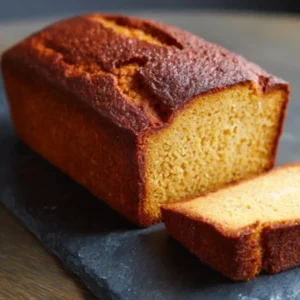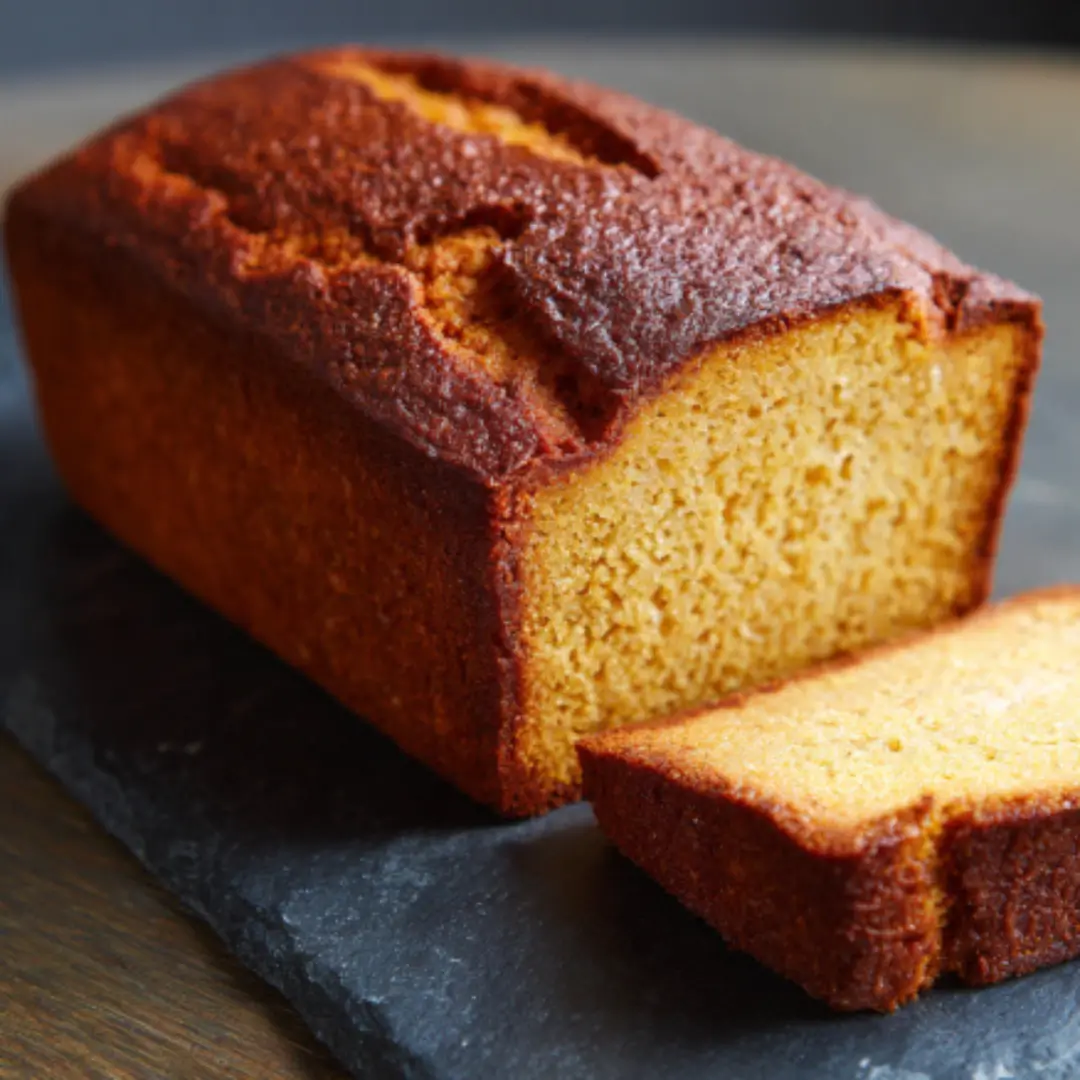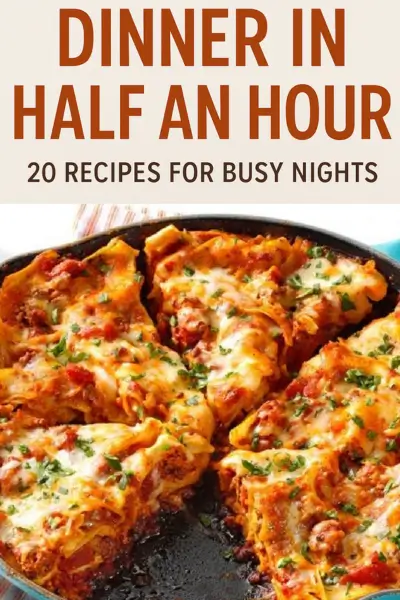Paleo Bread is a tasty bread made without grains or gluten. It uses natural ingredients like almond and coconut flour to make a soft, healthy loaf. This bread is great if you want to avoid regular wheat bread but still enjoy something fresh and homemade.
Why We Love This Paleo Bread Recipe
You’ll appreciate this Paleo Bread because it’s both easy to make and packed with nutrients. The blend of almond and coconut flours offers healthy fats and fiber, while flaxmeal adds a boost of omega-3s and a slight nuttiness. It’s a versatile bread that holds together well, perfect for sandwiches or as a side to your favorite meals. Plus, it requires minimal ingredients and simple steps, so you can enjoy homemade bread without hassle.
Ingredients for Paleo Bread
- 2 cups blanched almond flour (ensure it’s not almond meal for the best texture)
- 2 tablespoons coconut flour
- ¼ cup golden flaxmeal
- ¼ teaspoon Celtic sea salt
- ½ teaspoon baking soda
- 5 large eggs
- 1 tablespoon apple cider vinegar
How to Make Paleo Bread: Directions
To start, gather your ingredients and prepare your loaf pan by greasing it lightly to prevent sticking. In a food processor, combine the almond flour, coconut flour, golden flaxmeal, sea salt, and baking soda. Pulse these dry ingredients together until they are evenly mixed.
Next, add the eggs and apple cider vinegar to the food processor. Pulse again until all the ingredients come together in a smooth batter. The mixture will be thicker than typical bread batter but should be well combined.
Pour the batter into your prepared loaf pan, spreading it evenly to fill the pan. Place the pan in a preheated oven at 350°F (175°C). Bake for about 30 minutes or until the bread is golden on top and a toothpick inserted into the center comes out clean.
Once baking is complete, remove the bread from the oven and allow it to cool in the pan for approximately two hours. Cooling in the pan helps the bread set and makes slicing easier without crumbling.
After cooling, gently remove the bread from the pan and slice as desired. This Paleo Bread offers a firm texture that is perfect for holding toppings or making sandwiches.
How to Serve Paleo Bread
You can enjoy Paleo Bread in many ways. It’s excellent toasted with a spread of your favorite nut butter or avocado for a quick breakfast. Use it as the base for sandwiches filled with lean proteins and fresh veggies for a satisfying lunch or dinner.
Because it’s hearty and nutrient-rich, Paleo Bread pairs wonderfully with soups and salads as a side. You can also slice it thin and use it as a cracker substitute for dips and spreads during snacks or gatherings.
Feel free to get creative by topping it with cinnamon and a drizzle of honey for a sweet treat or layering savory ingredients for a more filling option. No matter how you serve it, this bread supports your health goals without sacrificing flavor.
Expert Tips: Paleo Bread
To get the best results, always measure your flours accurately using a spoon and level method instead of scooping directly from the bag, which can pack the flour and affect texture.
Make sure your eggs are fresh, as they contribute significantly to the bread’s rise and structure. The apple cider vinegar works to activate the baking soda, helping the loaf become light and airy despite being grain-free.
If you don’t have a food processor, you can mix the ingredients thoroughly by hand, but be sure to combine well to avoid lumps. Using a loaf pan that closely matches the recommended size ensures even baking; too large a pan will make the bread thin, while too small will leave it dense and undercooked.
Allowing the bread to cool completely before slicing is key. Cutting it too early can cause it to crumble or fall apart. You can store leftovers wrapped in parchment paper or in an airtight container at room temperature for a couple of days.
How to Store Paleo Bread
To keep your Paleo Bread fresh, store it in an airtight container or wrap it tightly in plastic wrap or foil. At room temperature, it will stay good for about two days.
If you want to keep it longer, placing the bread in the refrigerator can extend its shelf life up to a week, but be aware that refrigeration might slightly dry it out.
For even longer storage, slice the bread and freeze it in a sealed bag. When you’re ready to eat, thaw the slices at room temperature or toast them straight from the freezer for a quick, warm snack.
Proper storage helps maintain the bread’s moisture and texture, ensuring you can enjoy it whenever you want without wasting any.
Variation of Paleo Bread
If you want to add a bit of variety to your Paleo Bread, you can mix in herbs such as rosemary, thyme, or oregano for a savory twist. Adding chopped nuts or seeds like pumpkin or sunflower seeds on top before baking also adds a pleasant crunch and extra nutrition.
For a sweeter version, consider folding in cinnamon and a small amount of natural sweetener like honey or maple syrup to the batter. You could also add dried fruits like raisins or chopped dates to bring a hint of natural sweetness.
Another option is to replace part of the almond flour with hazelnut or cashew flour to change the flavor profile while keeping the bread grain-free.
Feel free to experiment with these variations to find the version of Paleo Bread that best suits your taste and dietary needs.
Frequently Asked Questions About Paleo Bread
What makes Paleo Bread different from regular bread?
Paleo Bread is made without grains or gluten, relying on almond and coconut flours instead of wheat. This makes it suitable for those following paleo, gluten-free, or low-carb diets.
Can I use almond meal instead of almond flour?
It’s best to use blanched almond flour because almond meal is coarser and can affect the bread’s texture and density, leading to a heavier loaf.
How long does Paleo Bread stay fresh?
At room temperature, it stays fresh for about two days. Refrigeration can extend this to a week, and freezing will keep it good for several months.
Is Paleo Bread suitable for people with nut allergies?
Since it contains almond flour, this bread is not recommended for those with nut allergies.
Can I make this bread without eggs?
Eggs help bind the ingredients and provide structure. Without them, the bread may not hold together well. You might try egg substitutes, but results will vary.
Does the bread rise like regular bread?
It won’t rise as much as traditional wheat bread because it lacks gluten. However, the baking soda and eggs give it enough lift to avoid being too dense.

Paleo Bread
Equipment
- Loaf Pan
- Food Processor
Ingredients
- 2 cups blanched almond flour (not almond meal for best texture)
- 2 tablespoons coconut flour
- 1/4 cup golden flaxmeal
- 1/4 teaspoon Celtic sea salt
- 1/2 teaspoon baking soda
- 5 large eggs
- 1 tablespoon apple cider vinegar
Instructions
- Preheat your oven to 350°F (175°C) and grease your loaf pan.
- In a food processor, combine almond flour, coconut flour, flaxmeal, sea salt, and baking soda. Pulse until mixed.
- Add eggs and apple cider vinegar to the processor. Pulse until a smooth batter forms.
- Pour the batter into the prepared loaf pan and spread evenly.
- Bake for about 30 minutes or until golden and a toothpick comes out clean.
- Allow the bread to cool in the pan for about two hours before removing and slicing.
Send me this recipe!
Just enter your email below and get it sent straight to your inbox!


